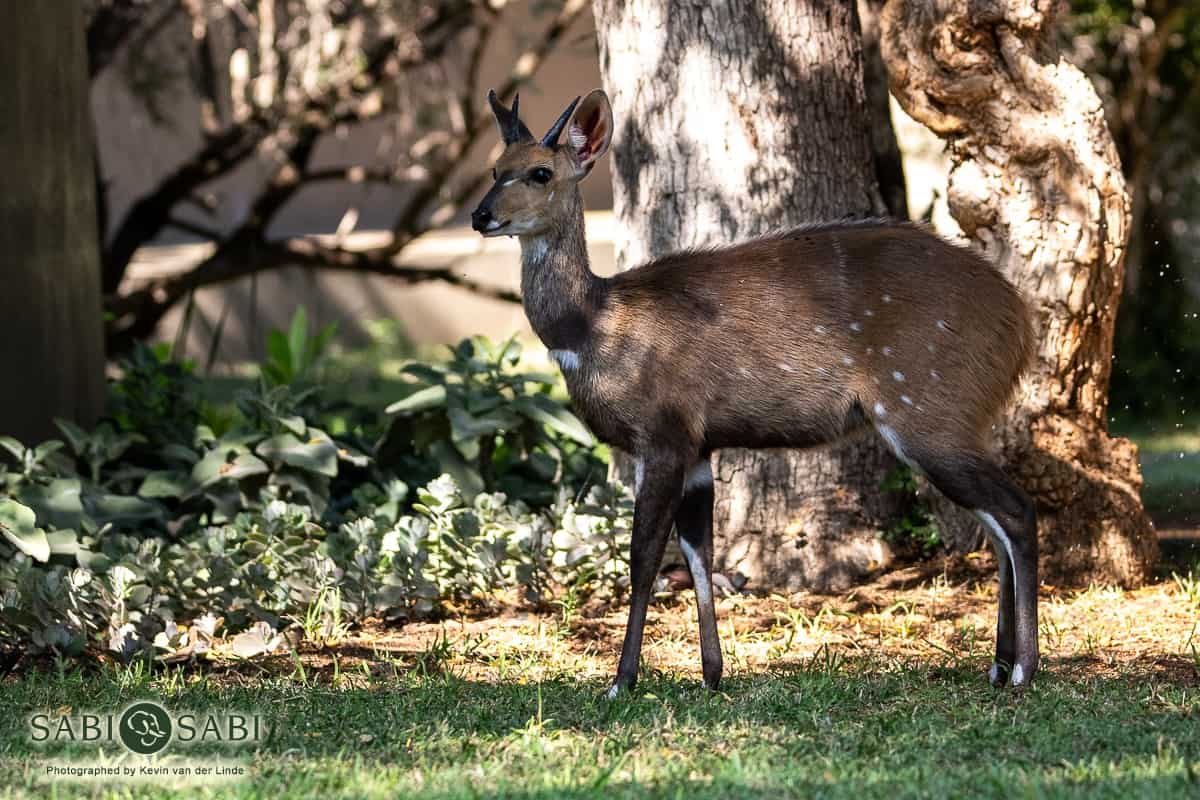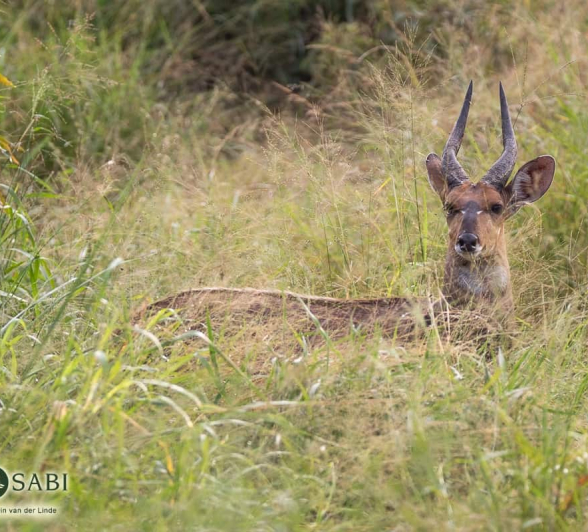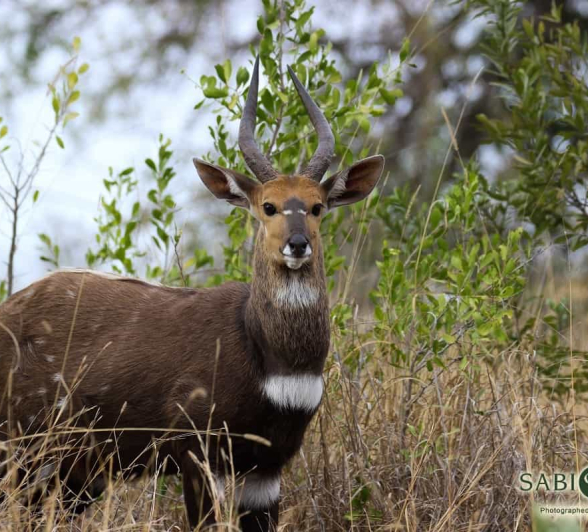Bushbuck
on Jun 07, 2019Scientific Name: Tragelaphus sylvaticus
Weight: Male 40-80kg Female 25-60kg
Shoulder height: 65-100cm
General habitat: Dense bush at the base of mountains or along river courses.
Diet: Predominantly browser, occasional grazer
Gestation: 6-7 months
Lifespan: 12 years

The bushbuck is the smallest of the medium-sized antelope and is often quite hard to find due to their solitary behaviour and the dense vegetation in which they reside. They do however leave the security of the thickets under nightfall and move into open areas where their feeding habits will shift from browsing to grazing. During the winter months they are frequently viewed in and around the lodge areas where they feed on the green vegetation, so keep an eye out around your suite and you might be lucky to see one.
Unlike the other spiral-horned antelope (Kudu, Nyala, Eland) the bushbuck lives a solitary lifestyle, with only the females being in association with their latest calf. Bushbuck are not territorial but will clash for breeding rights. Males will very rarely engage in a fight due to their straight, sharp horns which can cause severe injuries but will rather intimidate one another by circling with tense, high steps, erected crests and tails laid over their back and fluffed. If this doesn’t yield a winner, the intensity will increase and chase each other followed by horn clashing.
The dominant male will then mate with a female and after a gestation of 6-7months, the female will give birth to a single calf in dense vegetation after which it will remain hidden and won’t accompany her out in to the open for at least 4 months. In high rainfall areas they do not have a set breeding season but in arid areas there is a peak in the wet season.
Leopards are the biggest threat to bushbuck due to them frequenting the same habitat, but wild dog and lion will also attempt to bring one down if they step out of cover or fail to sense any danger lurking nearby in a dry riverbed. When they do sense danger, the first response would be to stand motionless and blend into their surroundings but if detected they will dart off to the nearest cover with their tails raised over their rump.
My Memorable Sighting
During a morning safari we spotted a male Bushbuck standing amongst some dense vegetation, we switched the vehicle off and were admiring his beauty when another male emerged. The 2 males then stood beside each other sizing one another up as their first means of intimidation to avoid a serious fight. Slowly the hair on their crests started standing up and they walked around in circles, it was a beautiful display and something I had never seen before because of their shy nature but their minds were fixated on emerging victorious but neither backed down until all of a sudden the one male made a move and started chasing the other around with strong intent. They disappeared into a riverbed so we weren’t too sure who the final winner was but one thing was for sure and that is that they put on a beautiful show for my guests as it was something a little different from the usual horn clashing one might see from other species like the impala.
Photo Content









